Product Description
Technical parameters
| Model | Power P(kW) | ratio (i) |
Rotate speed N(RPM) |
Output torque T (N. m) |
| 09#-9# | 0.12 – 90 | 7 -650000 | 17-155 | top to 30000 |
Features
– Highly Standard Modular Designed
– Quality material ensures the product reliability
– High Strength,Compact Dimension
– Long Service Life
– Low Noise
– High Efficiency
– Large radial loading ability
– Axial load ability of up to 5% of radial load
Application examples
– Belt conveyor drives
– Bucket elevator drives
– Agitator drives
– Hoisting gear drives
– Travelling gear drives
– Paper machine drives
– Dryer drives
– Water screw drives
Installation
Plant
Office Block
Team
| Application: | Machinery, Industry |
|---|---|
| Hardness: | Soft Tooth Surface |
| Installation: | Horizontal Type |
| Layout: | Cycloidal |
| Gear Shape: | Bevel Gear |
| Step: | Single-Step |
| Customization: |
Available
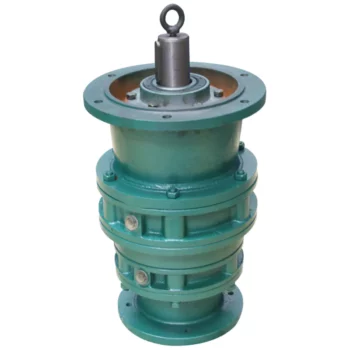
Distinguishing Features of Cycloidal GearboxesCycloidal gearboxes, also known as cycloidal drives or cycloidal reducers, possess distinct characteristics that set them apart from other types of gearboxes:
These distinguishing features contribute to the unique capabilities and benefits of cycloidal gearboxes in specific applications. | Customized Request |
|---|
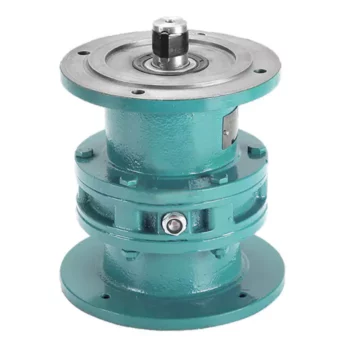
Industries Benefiting from Cycloidal Gearboxes
Cycloidal gearboxes find applications in various industries where their unique characteristics are advantageous:
- Robotics and Automation: Cycloidal gearboxes are widely used in robotic systems for their compact design, high torque capacity, and precise motion control.
- Material Handling: Industries such as logistics and warehousing benefit from cycloidal gearboxes in conveyor systems due to their ability to handle heavy loads and provide smooth and accurate movement.
- Manufacturing: Equipment used in manufacturing processes, such as packaging machines and printing presses, often incorporate cycloidal gearboxes for their reliability and precise positioning.
- Aerospace: In aerospace applications, cycloidal gearboxes can be found in satellite systems, where their compactness and high torque-to-weight ratio are crucial.
- Medical Devices: Cycloidal gearboxes are used in medical equipment like robotic surgery systems for their precise movement capabilities and space-saving design.
- Defense: Military applications, such as remotely operated vehicles and surveillance equipment, benefit from cycloidal gearboxes’ ability to handle rugged conditions and provide precise control.
These industries leverage the advantages of cycloidal gearboxes to enhance the performance and efficiency of their systems.


editor by CX 2023-08-22
China Best Sales B/X Series Cycloidal Pinwheel Planetary Gearbox for Belt Conveyor gearbox engine
Product Description
Technical parameters
| Model | Power P(kW) | ratio (i) |
Rotate speed N(RPM) |
Output torque T (N. m) |
| 09#-9# | 0.12 – 90 | 7 -650000 | 17-155 | top to 30000 |
Features
– Highly Standard Modular Designed
– Quality material ensures the product reliability
– High Strength,Compact Dimension
– Long Service Life
– Low Noise
– High Efficiency
– Large radial loading ability
– Axial load ability of up to 5% of radial load
Application examples
– Belt conveyor drives
– Bucket elevator drives
– Agitator drives
– Hoisting gear drives
– Travelling gear drives
– Paper machine drives
– Dryer drives
– Water screw drives
Installation
Plant
Office Block
Team
| Application: | Machinery, Industry |
|---|---|
| Hardness: | Soft Tooth Surface |
| Installation: | Horizontal Type |
| Layout: | Cycloidal |
| Gear Shape: | Bevel Gear |
| Step: | Single-Step |
| Customization: |
Available
| Customized Request |
|---|
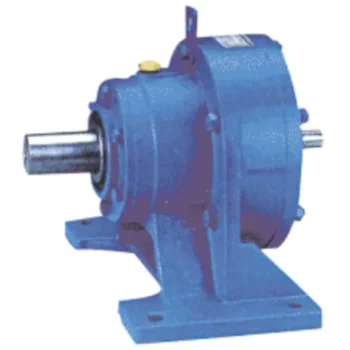
What is a Cycloidal Gearbox?
A cycloidal gearbox, also known as a cycloidal drive, is a type of gearing mechanism that utilizes the principle of cycloidal motion for power transmission. It consists of several components, including a high-speed input shaft, a set of cycloidal pins or rollers, and an outer stationary ring with lobed profiles.
The operation of a cycloidal gearbox involves a unique mechanism:
- Input Shaft: The high-speed input shaft is connected to the driving source, such as an electric motor. It transfers rotational motion to the cycloidal pins.
- Cycloidal Pins or Rollers: These pins or rollers are typically arranged around the input shaft in a circular pattern. As the input shaft rotates, the cycloidal pins also rotate, causing them to engage with the lobes on the outer stationary ring.
- Outer Stationary Ring: The outer ring has lobed profiles, and it remains stationary during operation. The lobes of the outer ring interact with the cycloidal pins or rollers, causing them to move in a unique motion known as epicycloidal or hypocycloidal motion.
The interaction between the cycloidal pins and the lobed profiles of the outer ring results in smooth and controlled motion transmission.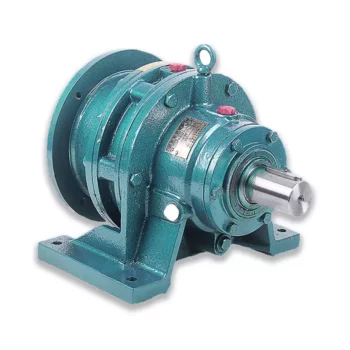
Patents Associated with Cycloidal Gearbox Designs
Throughout the history of cycloidal gearbox development, several patents have been filed for various designs and applications. Some notable 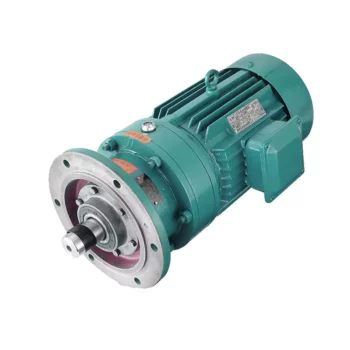
Materials Used in Manufacturing Cycloidal Gearboxes
Cycloidal gearboxes are constructed using a variety of materials to ensure durability, strength, and efficient operation. Some common materials used include:
- Steel: Steel is a popular choice due to its high strength and durability. It can withstand heavy loads and provides excellent wear resistance, making it suitable for industrial applications.
- Aluminum: Aluminum is chosen for its lightweight properties and corrosion resistance. It’s often used in applications where weight is a concern, such as aerospace and robotics.
- Cast Iron: Cast iron offers good heat dissipation and is known for its high resistance to wear and shock. It’s commonly used in heavy-duty applications that require high torque and strength.
- Alloys: Various alloy combinations can be used to enhance specific properties such as corrosion resistance, heat resistance, and strength.
- Plastics and Composites: In some cases, plastic or composite materials may be used, particularly in applications where low noise, lightweight construction, and corrosion resistance are essential.
The material selection depends on factors like the application’s torque, speed, environmental conditions, and desired performance characteristics. Each material offers a unique set of advantages, allowing cycloidal gearboxes to be customized to meet diverse industrial needs.
patents include:
- Harmonic Drive: Ralph B. Heath’s patent for the “Harmonic Drive” (US Patent 2,906,143), filed in 1957, is one of the most famous patents related to cycloidal gear systems. This patent introduced the concept of a high-precision reduction gear mechanism using flexible components.
- Cycloidal Drive Mechanism: A patent by James Watt for a “Cycloidal Drive Mechanism” (GB Patent 1812), dating back to the 18th century, is often cited as one of the early references to cycloidal motion and gears.
- Planetary Roller Transmission: US Patent 3,671,927 by C.F. Kafesjian and H. Blumenstock introduced a “Planetary Roller Transmission” in 1972, describing a cycloidal drive mechanism with planetary motion.
- Cycloidal Speed Reducer: A patent for a “Cycloidal Speed Reducer” (US Patent 5,588,583) was granted to Richard J. Pieprzak in 1996, focusing on an improved design of cycloidal gears for various applications.
These patents represent a small sample of the numerous innovations and designs related to cycloidal gear systems that have been patented over the years. Patents play a significant role in protecting and promoting innovation in the field of gearbox technology.
The mechanism provides advantages such as high torque capacity, compact size, and precise positioning capabilities.
Cycloidal gearboxes are widely used in various applications, including robotics, automation, packaging machinery, and other industrial systems where high torque, precision, and compact design are essential.


editor by CX 2023-08-17
China high quality roller chain conveyor chain metal chain planetary mixer cyclodial gearbox cyclo gearbox reducer with motor gear gearbox design
Guarantee: 1 years, 18 Months
Relevant Industries: Accommodations, Garment Retailers, Developing Content Outlets, Manufacturing Plant, Machinery Fix Retailers, Meals & Beverage Manufacturing facility, Farms, Restaurant, Home Use, Retail, Food Shop, Printing Retailers, Design works , Power & Mining, 220 volt ac geared induction electric motor 90mm 1 section 3 phase 90w Meals & Beverage Shops, Promoting Firm
Bodyweight (KG): forty six
Customized assistance: OEM, ODM, OBM
Gearing Arrangement: Cycloidal
Output Torque: 2.6-20000N.m
Input Speed: 750-3000rpm
Output Velocity: 11-280rpm
Ratio: 6-51133
Item identify: XWD Cycloid Velocity Reducer Ratio
Application: Ceramics
Content: Cast Iron
Shade: Blue
Mount Position: Horizontal Foot Mounted Vertical
Bearing: LYC
Certification: ISO9001
Packing: Wooden Situation
Packaging Particulars: Stanard wood scenario, or picket pallet
Fast Specifics:Kind: XB collection Cycloidal Pin Wheel Velocity Reducer Input Velocity: one thousand-1500rmp Output Velocity: .3-280rpmCertification: ISO9001 CE Ex Electricity:.09-132KW Warranty: 1Years
| Item Title | X/B sequence Cycloidal Pin Wheel Pace Reducer |
| The Equipment Content | GCR15 |
| The circumstance Substance | Solid Iron |
| Colour | Blue,Eco-friendly, or Tailored |
| HS Code | 84834090 |
| Model | X3 |
| Shipping time | seven-10days |
| Model | TIANGOU |
Certifications
Trade Shows
Packaging & ShippingPacking Information : Regular carton/Pallet/Regular wood scenario
Supply Particulars : fifteen-30 doing work days on payment
Organization Info
Trade Displays
Related Solution
Main product listing: sixteen sequence which includes SLR/SLS/SLK/SLF series difficult tooth flank gear reducer , SLRC series aluminium scenario helical gear reducers,SLHSLB sequence higher electrical power speed reducer, SLP sequence planetary pace reducer, X/B collection cycloidal reducer, SLXG collection shaft-mounted equipment box, SLSWL sequence worm screw jack, SLT sequence helical cone gear box, Bearing 6x16x6 35x16x11 35x11x15 30x80x21 25x47x14 16x35x7 10x15x5 55x30x13 25x65x17 22x7x7 16x31x10 15x42x12 5x15x5 14x28x8mm altogether far more than ten,000 ratios, various specification make us at the head of domestic transmission industry, commonly provide the mechanical transmission area of mild & large industry this kind of as: beer & beverage, mining device, food packing, textile printing, rubber & plastic substance, petrochemical market, jack-up transportation, pharmacy & approach hides, Customizable mini stepper motor with worm equipment 5882 motor metallic equipment box with self-locking massive torque nema 34 stepper motor environmental security tools.
Make contact with us
The Parts of a Gearbox
There are many parts of a Gearbox, and this article will help you understand its functions and components. Learn about its maintenance and proper care, and you’ll be on your way to repairing your car. The complexity of a Gearbox also makes it easy to make mistakes. Learn about its functions and components so that you’ll be able to make the best choices possible. Read on to learn more. Then, get your car ready for winter!
Components
Gearboxes are fully integrated mechanical components that consist of a series of gears. They also contain shafts, bearings, and a flange to mount a motor. The terms gearhead and gearbox are not often used interchangeably in the motion industry, but they are often synonymous. Gearheads are open gearing assemblies that are installed in a machine frame. Some newer designs, such as battery-powered mobile units, require tighter integration.
The power losses in a gearbox can be divided into no-load and load-dependent losses. The no-load losses originate in the gear pair and the bearings and are proportional to the ratio of shaft speed and torque. The latter is a function of the coefficient of friction and speed. The no-load losses are the most serious, since they represent the largest proportion of the total loss. This is because they increase with speed.
Temperature measurement is another important preventive maintenance practice. The heat generated by the gearbox can damage components. High-temperature oil degrades quickly at high temperatures, which is why the sump oil temperature should be monitored periodically. The maximum temperature for R&O mineral oils is 93degC. However, if the sump oil temperature is more than 200degF, it can cause seal damage, gear and bearing wear, and premature failure of the gearbox.
Regardless of its size, the gearbox is a crucial part of a car’s drivetrain. Whether the car is a sports car, a luxury car, or a farm tractor, the gearbox is an essential component of the vehicle. There are two main types of gearbox: standard and precision. Each has its own advantages and disadvantages. The most important consideration when selecting a gearbox is the torque output.
The main shaft and the clutch shaft are the two major components of a gearbox. The main shaft runs at engine speed and the countershaft may be at a lower speed. In addition to the main shaft, the clutch shaft has a bearing. The gear ratio determines the amount of torque that can be transferred between the countershaft and the main shaft. The drive shaft also has another name: the propeller shaft.
The gears, shafts, and hub/shaft connection are designed according to endurance design standards. Depending on the application, each component must be able to withstand the normal stresses that the system will experience. Oftentimes, the minimum speed range is ten to twenty m/s. However, this range can differ between different transmissions. Generally, the gears and shafts in a gearbox should have an endurance limit that is less than that limit.
The bearings in a gearbox are considered wear parts. While they should be replaced when they wear down, they can be kept in service much longer than their intended L10 life. Using predictive maintenance, manufacturers can determine when to replace the bearing before it damages the gears and other components. For a gearbox to function properly, it must have all the components listed above. And the clutch, which enables the transmission of torque, is considered the most important component.
Functions
A gearbox is a fully integrated mechanical component that consists of mating gears. It is enclosed in a housing that houses the shafts, bearings, and flange for motor mounting. The purpose of a gearbox is to increase torque and change the speed of an engine by connecting the two rotating shafts together. A gearbox is generally made up of multiple gears that are linked together using couplings, belts, chains, or hollow shaft connections. When power and torque are held constant, speed and torque are inversely proportional. The speed of a gearbox is determined by the ratio of the gears that are engaged to transmit power.
The gear ratios in a gearbox are the number of steps a motor can take to convert torque into horsepower. The amount of torque required at the wheels depends on the operating conditions. A vehicle needs more torque than its peak torque when it is moving from a standstill. Therefore, the first gear ratio is used to increase torque and move the vehicle forward. To move up a gradient, more torque is required. To maintain momentum, the intermediate gear ratio is used.
As metal-to-metal contact is a common cause of gearbox failure, it is essential to monitor the condition of these components closely. The main focus of the proactive series of tests is abnormal wear and contamination, while the preventative tests focus on oil condition and additive depletion. The AN and ferrous density tests are exceptions to this rule, but they are used more for detecting abnormal additive depletion. In addition, lubrication is critical to the efficiency of gearboxes.
Maintenance
Daily maintenance is a critical aspect of the life cycle of a gearbox. During maintenance, you must inspect all gearbox connection parts. Any loose or damaged connection part should be tightened immediately. Oil can be tested using an infrared thermometer and particle counters, spectrometric analysis, or ferrography. You should check for excessive wear and tear, cracks, and oil leaks. If any of these components fail, you should replace them as soon as possible.
Proper analysis of failure patterns is a necessary part of any preventative maintenance program. This analysis will help identify the root cause of gearbox failures, as well as plan for future preventative maintenance. By properly planning preventative maintenance, you can avoid the expense and inconvenience of repairing or replacing a gearbox prematurely. You can even outsource gearbox maintenance to a company whose experts are knowledgeable in this field. The results of the analysis will help you create a more effective preventative maintenance program.
It is important to check the condition of the gearbox oil periodically. The oil should be changed according to its temperature and the hours of operation. The temperature is a significant determinant of the frequency of oil changes. Higher temperatures require more frequent changes, and the level of protection from moisture and water reduces by 75%. At elevated temperatures, the oil’s molecular structure breaks down more quickly, inhibiting the formation of a protective film.
Fortunately, the gear industry has developed innovative technologies and services that can help plant operators reduce their downtime and ensure optimal performance from their industrial gears. Here are 10 steps to ensure that your gearbox continues to serve its purpose. When you are preparing for maintenance, always keep in mind the following tips:
Regular vibration analysis is a vital part of gearbox maintenance. Increased vibration signals impending problems. Visually inspect the internal gears for signs of spiraling and pitting. You can use engineers’ blue to check the contact pattern of gear teeth. If there is a misalignment, bearings or housings are worn and need replacement. Also make sure the breathers remain clean. In dirty applications, this is more difficult to do.
Proper lubrication is another key factor in the life of gearboxes. Proper lubrication prevents failure. The oil must be free of foreign materials and have the proper amount of flow. Proper lubricant selection depends on the type of gear, reduction ratio, and input power. In addition to oil level, the lubricant must be regulated for the size and shape of gears. If not, the lubricant should be changed.
Lack of proper lubrication reduces the strength of other gears. Improper maintenance reduces the life of the transmission. Whether the transmission is overloaded or undersized, excessive vibration can damage the gear. If it is not properly lubricated, it can be damaged beyond repair. Then, the need for replacement gears may arise. However, it is not a time to waste a lot of money and time on repairs.


editor by czh 2023-02-16